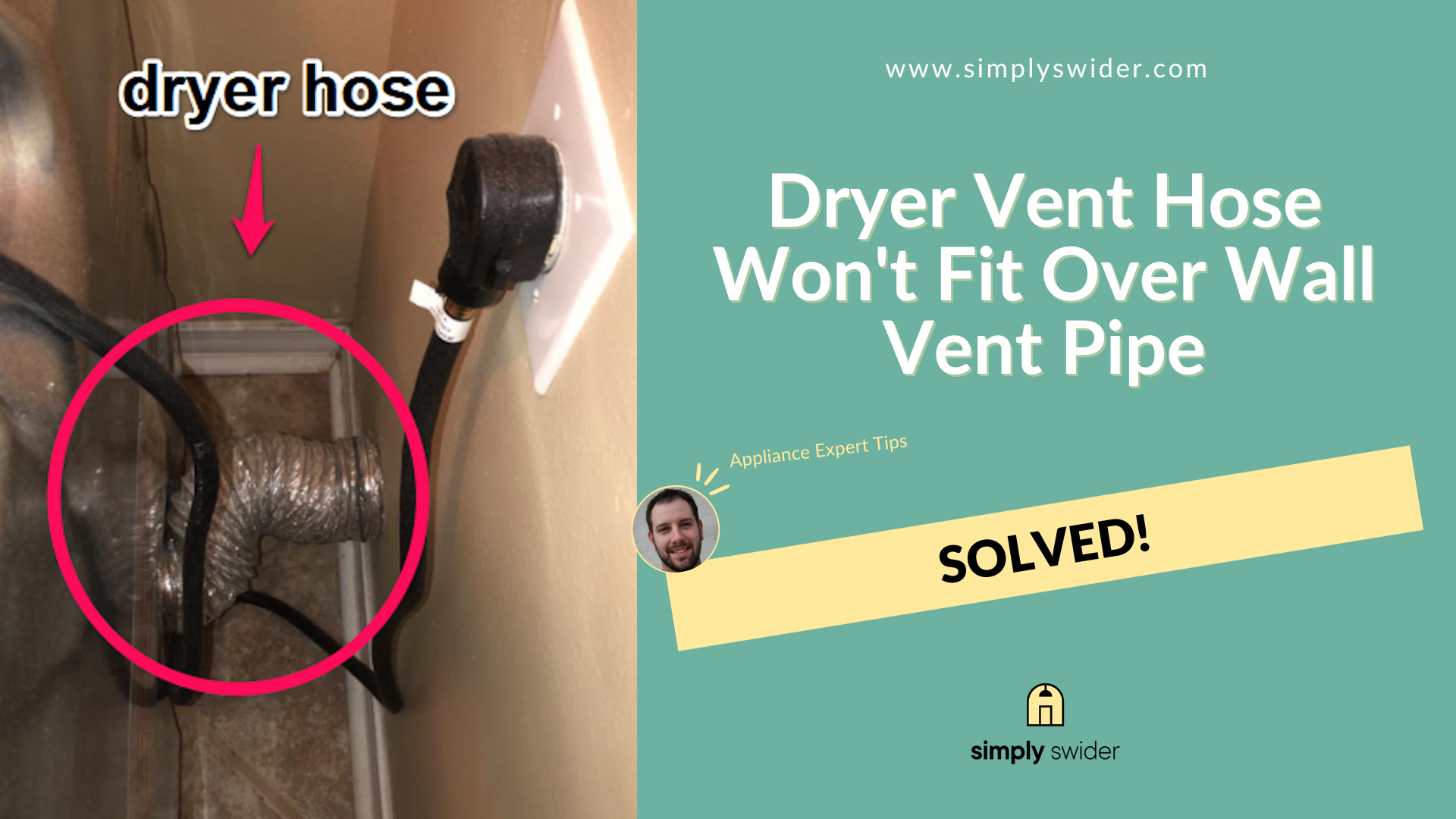Look:
Many dryer owners affirm that installing the vent hose should be a quick and easy DIY affair. But for you, it has been an almost impossible task.
It is not.
Although I have found installing dryer vent hoses that won’t fit the wall vent pipe challenging, I have also discovered working solutions.
And I will share them with you.
In addition:
I’ve invited Jeremy Walter, an experienced appliance technician and general contractor from Nashville, Tennessee, to give his expert opinion on the issue.
Ready?
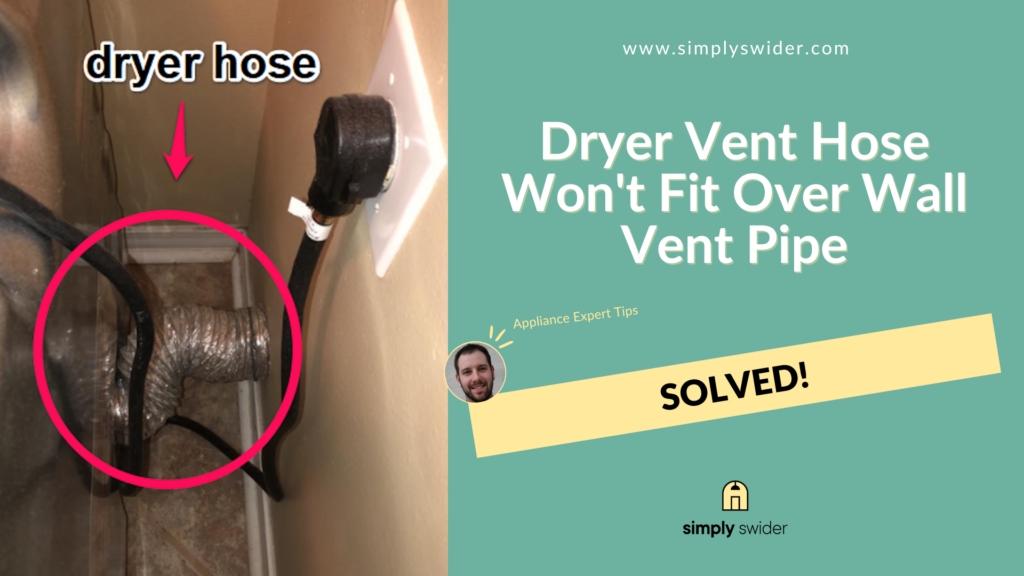
Table of Contents
Understanding Why Your Dryer Vent Hose Won’t Fit the Vent Pipe
Get this:
Before figuring out how to get your dryer vent hose to fit in the pipe, you must understand the scope of the problem.
You see:
If you’ve ever dealt with a dryer that smells like burning, you’d know that vent tubing is manufactured in various flexible and rigid materials.
And the type of dryer vent duct you use matters when determining the approach to solve your problem.
So:
Identify the category your vent duct falls under. Is it made of aluminum foil, semi-rigid aluminum, slim duct, rigid metal, or plastic?
Then:
Consider certain prevalent factors as possible reasons for the vent hose’s incompatibility with the vent pipe. These include a size discrepancy, mismatched vent hose ports, a deformed pipe, and a lint obstruction. Also, if the vent pipe is improperly installed, you will have issues fitting the vent hose.
Subsequently:
I will shed more light on these reasons to help you solve your problem. So, unplug your dryer, let’s get to work.
4 Common Reasons and Troubleshooting Steps for a Dryer Vent Hose That Won’t Fit Over the Wall Vent Pipe
| Parts/Tools Needed | Estimated Cost |
|---|---|
| Vent hose | $8 – $35 |
| Wall vent pipe | $7 – $35 |
| Coupler | $7 – $20 |
| Elbow fitting | $6 – $20 |
| Tape measure | $4 – $69 |
| Stainless steel circular clamp | $8 – $43 |
| Vent brush | $6 – $43 |
1. Size Discrepancy and Incompatibility Between the Vent Hose and Pipe Ports
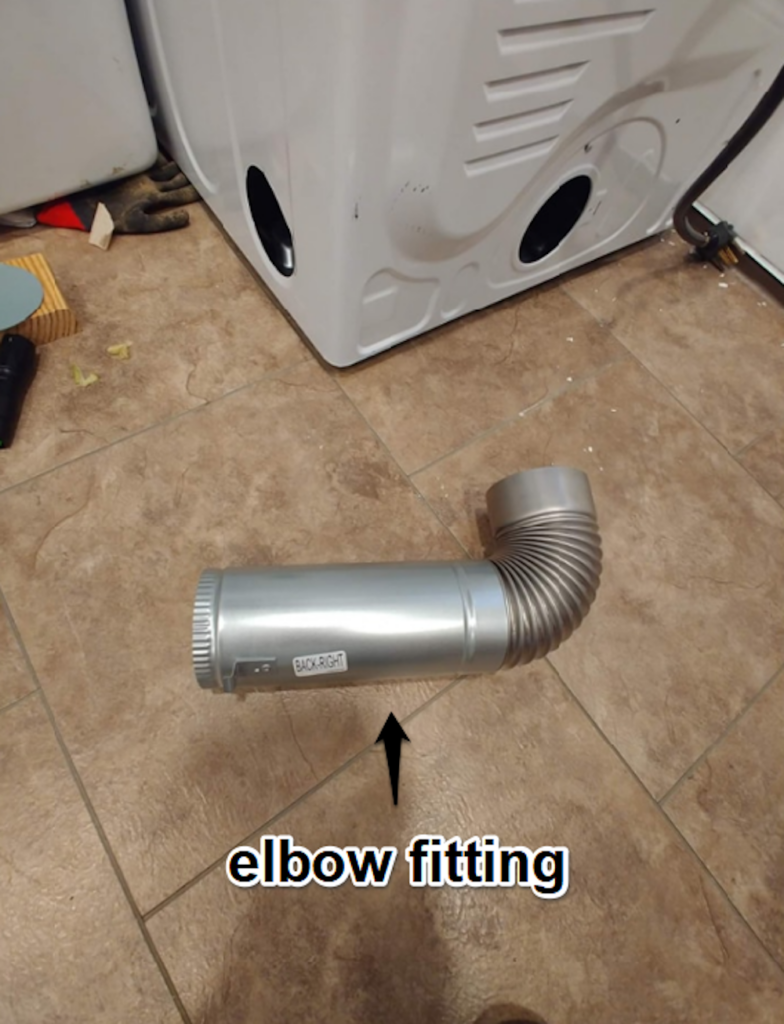
Listen:
It doesn’t matter how often you try to jam them together. If the ports on the dryer vent hose are incompatible with those on the pipe, it will never fit.
Typically:
The dryer exhaust tube (wall vent pipe) has a male connector, while the rigid metal duct has a female connector at the inlet port.
For an ideal fit, the dryer vent hose must have male and female ports to match the wall vent pipe connectors.
Similarly:
If there is a size mismatch between the internal diameter of the vent hose and the wall vent pipe, you will have fitting issues.
This happened to a Reddit user whose dryer exhaust opening had an internal diameter of 3.6 inches and vent hose measured 4 inches.
You see:
This wall vent opening could not fit the semi-rigid vent hose. And while another user suggested using duct tape, Jeremy disagreed.
He says:
“For a snug fit, the semi-rigid dryer hose should have a slightly larger internal diameter than the external diameter of the vent pipe.”
From my experience:
To confirm its compatibility, you must measure your vent hose diameter with a tape measure or ruler.
Straighten the vent hose, hold the measuring tape at a point, and stretch it across the center to the diagonal side.
Finally:
To solve this problem, Jeremy suggests using a coupler or elbow fitting as an adaptor between both parts.
2. Deformed Wall Vent Pipe
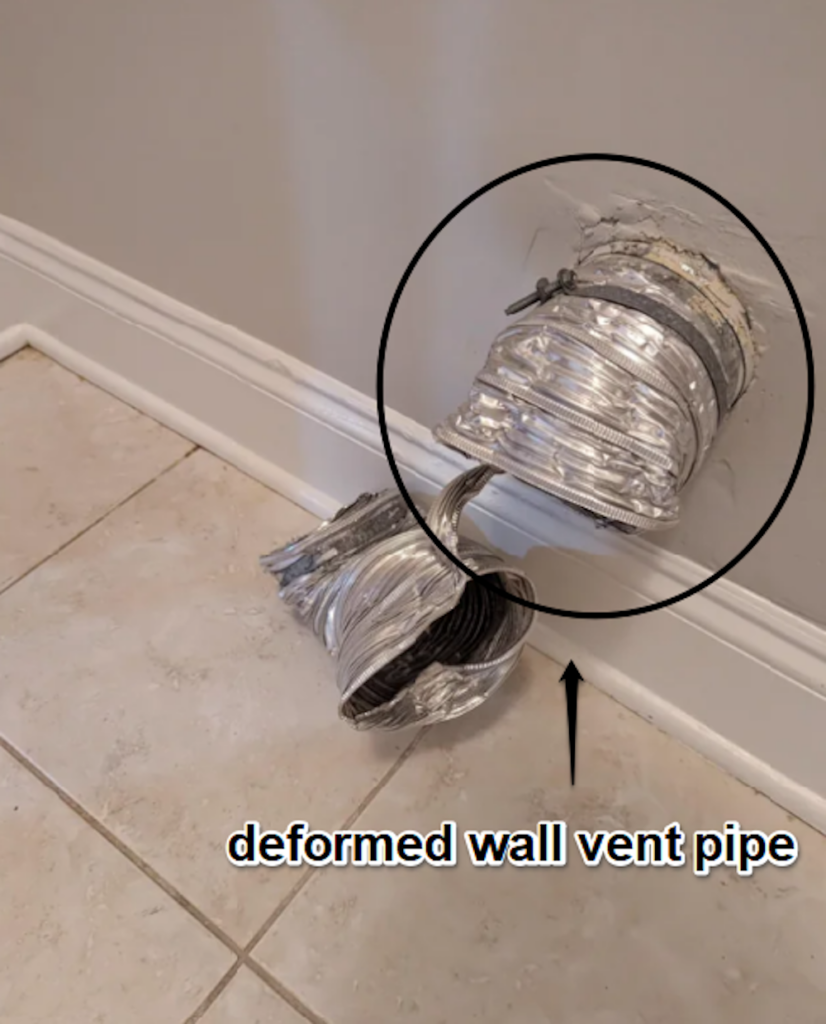
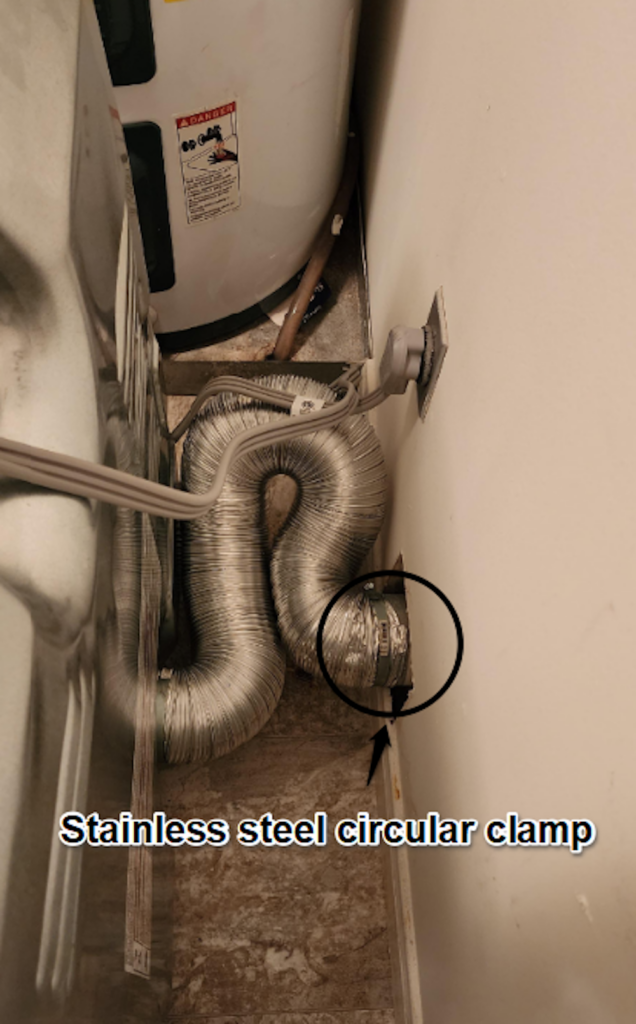
Fact:
Over time, the vent pipe could wear out, or be subjected to accidental damage leaving it in a warped state.
Here’s how this Reddit user told it:
“Everything went well…until he tried to attach the vent hose to the wall. The vent pipe looks a little deformed and seems out of round…”
Clearly:
The dryer vent hose will not fit over a deformed wall vent pipe. Such deformity could cause lint build-up, impaired airflow, and other hazards.
In any case:
Other users constructively recommended clipping off the end of the hose to accommodate the wall pipe. Then, use a firm hose clamp to secure it.
Note that:
I specifically recommend the stainless steel circular clamps for the job.
Jeremy chips in:
“Be careful not to kink the vent hose as it would hinder the airflow, and your dryer will not heat.”
3. Lint Obstruction in the Vent Hose or Pipe
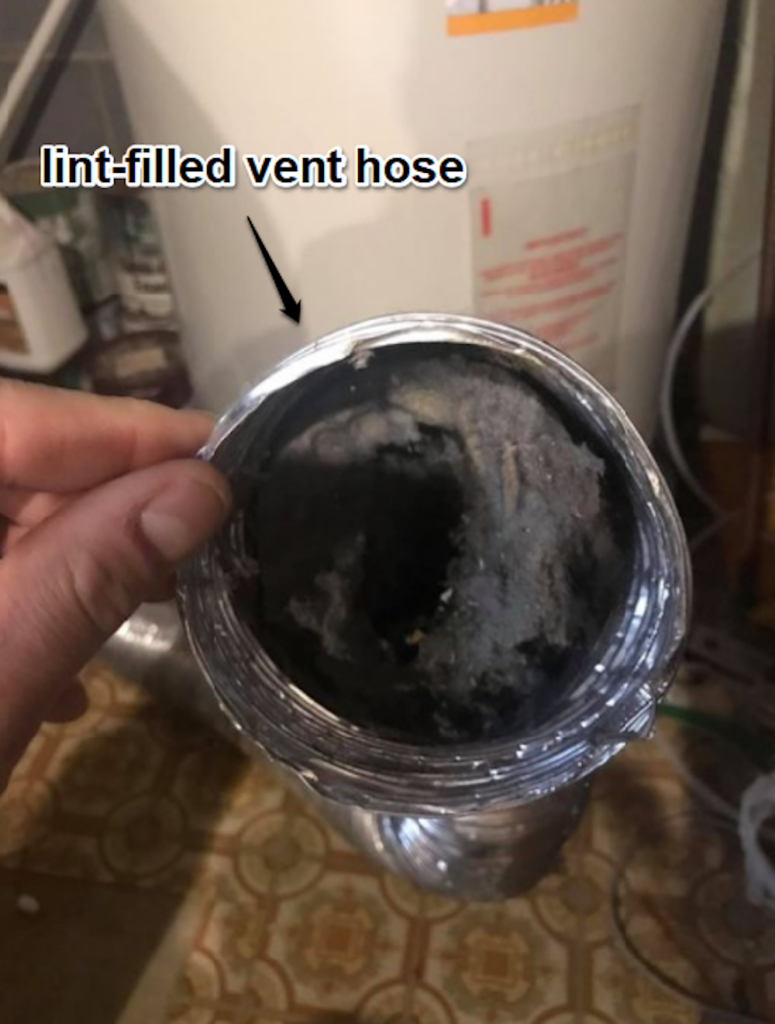
Now:
Accumulated lint is always bad news. But the good news is, spotting a lint-filled vent is pretty much a walk in the park.
The thing is:
Lint build-up in the vent hose or pipe will make it difficult for the vent hose to stay attached.
And this Reddit user shares the same sentiments concerning his dryer vent accumulating lint.
So, what do you do?
Detach the vent hose and inspect the tube for any build-up. If you detect any, grab your vent brush and clean it out thoroughly.
Next:
While the vent hose is still detached, clean the wall vent pipe and get rid of any lint. Then reassemble your dryer vent.
Wasn’t it easy?
Essentially, your vent hose should fit snugly over the wall vent pipe after this procedure.
Jeremy adds that you should consider employing a professional dryer vent cleaning service for a more exhaustive finish.
All in all:
To avoid a recurring motif of this issue, you must regularly clean your dryer vent.
4. Improper Installation of the Vent Pipe
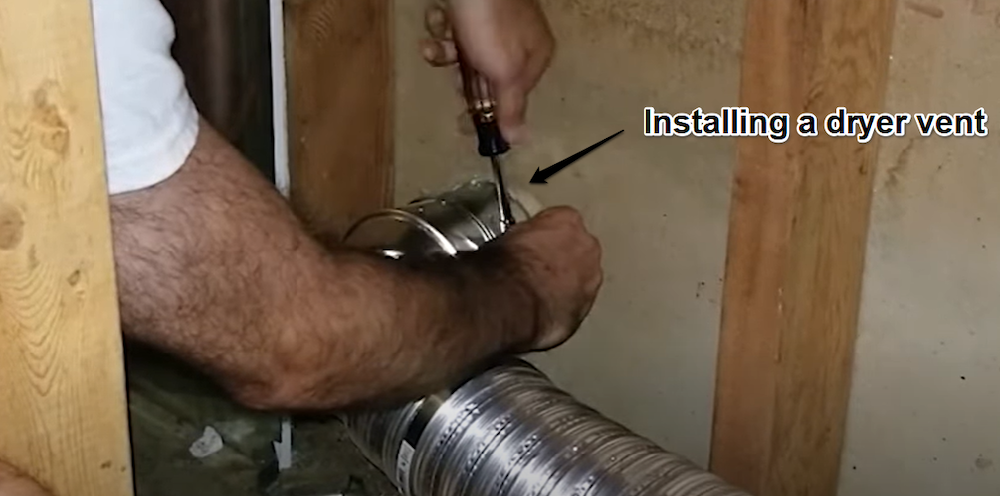
Here’s the thing:
A member of our Facebook community shared his experience with his Whirlpool dryer that stopped heating. He said he didn’t know his dryer vent hose had slipped off until it refused to heat.
What could have caused this?
If accumulated lint isn’t the problem, the next suspect on your list should be incorrect vent pipe installation.
In my experience:
When the vent pipe is not installed properly, the vent hose becomes loosely attached to it. This means that you could notice sagging sections or gaps between duct segments.
So, how do we fix it?
Jeremy opens the floor by saying, “First things first, you must ensure that the pipe is straight and short and is on its vent route.”
Next, you should support sagging segments, replace sharp bends for better airflow, and close up gaps with clamps.
Remember:
Always call a professional when you are in doubt.
Conclusion
No!
You cannot just do without your dryer vent. I know you’re tempted, but it is a vital dryer component that helps expel heat, lint, and moisture that could cause serious problems.
As such:
Regardless of how back-breaking the task of fitting your dryer vent hose into the vent pipe is, you just have to do it.
That is why I have highlighted and explained the common reasons why you might be facing this challenge.
These include:
- Size discrepancy between the vent hose and pipe.
- Deformed wall vent pipe.
- Lint obstruction in the vent hose or pipe.
- Improper installation of the vent pipe.
Jeremy adds:
“Correctly installing and maintaining your dryer vent is crucial if you want peace of mind. Besides, who wouldn’t seize the opportunity to avoid issues like a lint-clogged vent that could cause your dryer to trip the circuit breaker?”
In any case:
Employ the suggestions provided, and let me know how it goes! Be sure to use our “Ask the Expert“ feature if you need special guidance during this procedure.
Remember:
I’ll be looking out for your feedback in the comment section below.
Frequently Asked Questions
Your dryer vent hose will keep falling off if the hose clamp is loosely connected to the wall vent pipe. This is typically the case with short vent hoses.
Generally, most dryer ducts have a 4-inch diameter. However, some may have a smaller or larger diameter.
I recommend using clamps to secure your dryer vent connections to reduce the risk of air leaks and ensure durability. However, some people use tape and have to deal with deterioration and a general loss of effectiveness.

